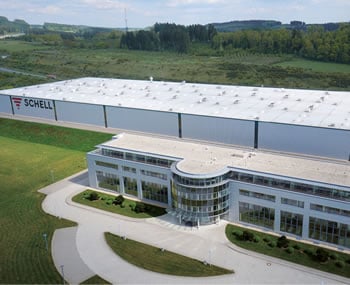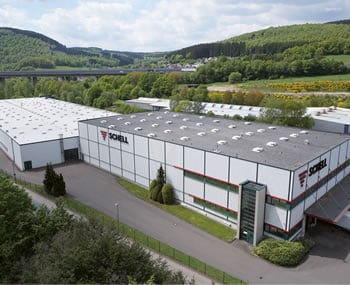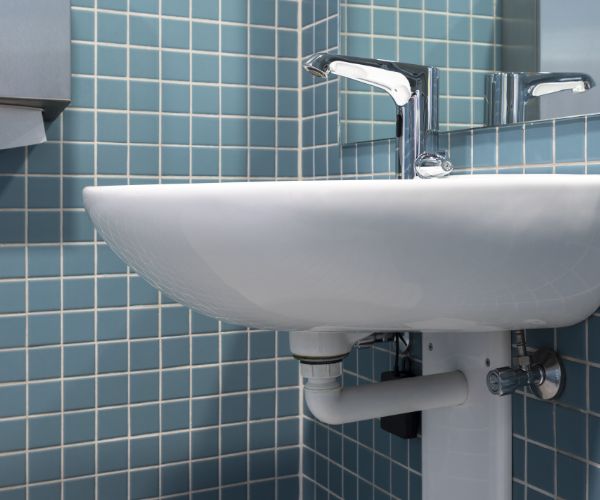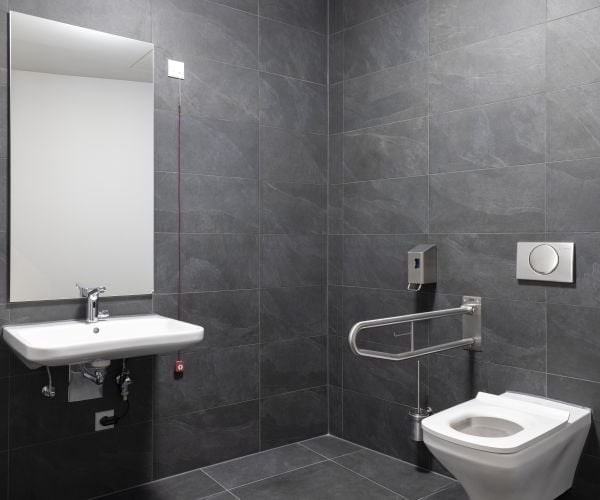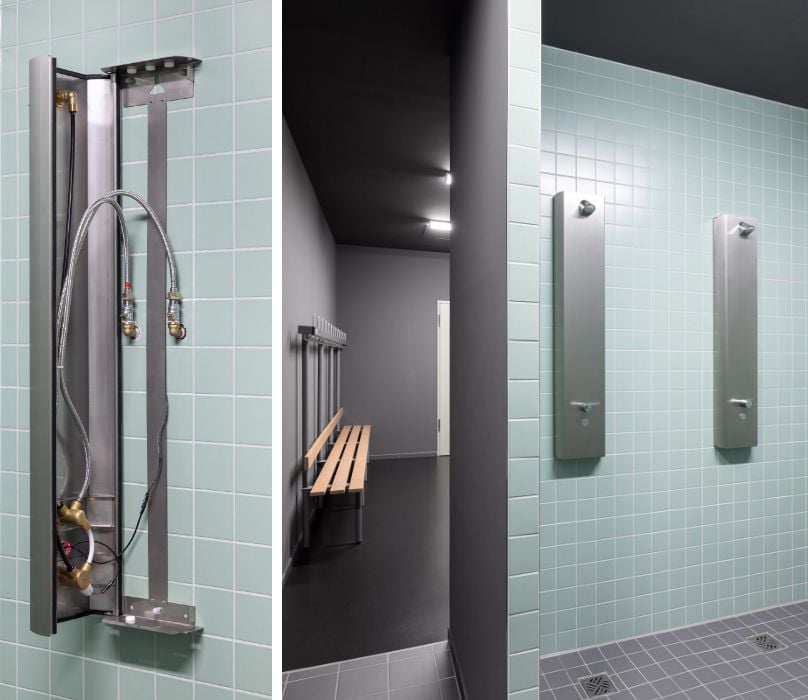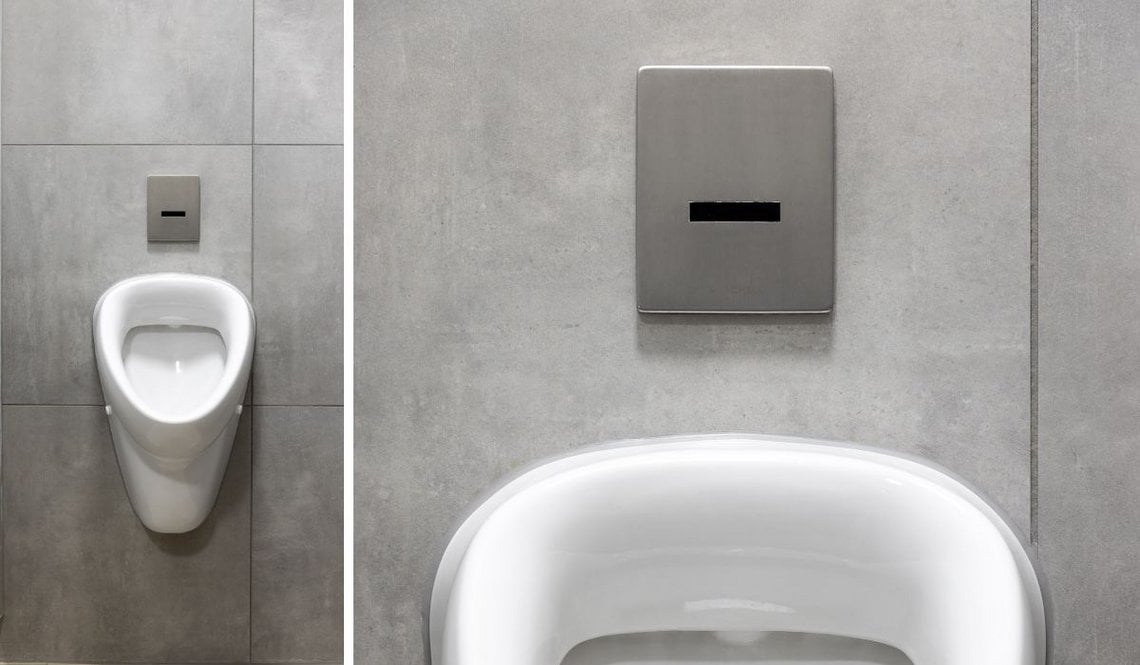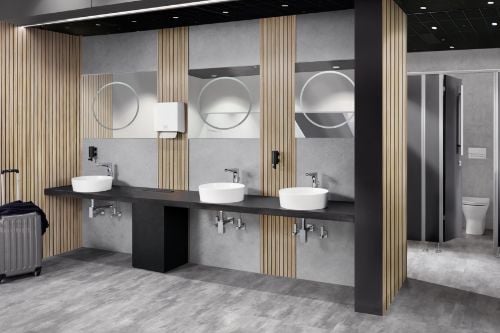Renovating sanitary facilities in sports centres with SCHELL products
Outdated technical systems, premises long past their prime and massive energy bills: many sports centres in Germany are badly in need of renovation. The sanitary facilities in sports venues have an important role to play here. Antiquated drinking water installations not only lead to higher energy bills for hot water but may also affect the drinking water quality and therefore endanger the health of the venue’s patrons. If drinking water is allowed to stagnate in the piping during school or club holidays, this can elevate the risk of Legionella. SCHELL offers a wide choice of environmentally friendly sanitary solutions that are ideally suited for use in sports centre renovations. Quick and easy to retrofit, these solutions improve building efficiency, increase user safety, lower costs and help sports centre managers to keep their drinking water installations operating hygienically in line with regulations.
Our top 5 requirements for sanitary facilities and sports venues
Renovating sanitary facilities in sports venues presents planners and building operators with several challenges specific to these kinds of premises. Modern sanitary equipment not only has to meet high standards for hygiene but also needs to comply with specific regulations for safety and accessibility.
- Requirement 1 – meeting hygiene standards in sports centres that experience a varying level of use
One basic parameter that needs to be taken into account when planning and constructing sanitary facilities in sports centres is the variation in the level of use. This variation is strongly dependent on the time of day and how the centre is being used. While the facilities can be packed to capacity during major sporting events or if several teams are showering after a training session, the level of use will drop to zero for several days or even weeks during school or club holidays. The size of a drinking water installation in a sports venue therefore needs careful planning. While the facility must supply enough water even during times of peak use, the building operators also need to ensure that drinking water is not left to stagnate in the piping when the sports centre is at low or zero capacity utilisation, because this endangers the quality of the drinking water. - Requirement 2 – User hygiene in sports centres
In places where people gather together, there is always an increased risk of infection. This is also true for the sanitary facilities at sports centres, which are used by many sports clubs, school classes and fitness enthusiasts on a daily basis. To minimise this risk of infection, building operators should choose contactless fittings for the fit-out of showers, changing rooms and WCs.
Key aspects for planning sanitary facilities: needs-based renovation of sanitary facilities in sports venues
Renovations to sanitary equipment in a sports centre should be comprehensively planned and always consider the future use of the venue. After all, the renovated premises should be able to be used for several decades rather than just a few years. The most important aspects to take into account during the planning and management of sanitary equipment in sports centres are cost-effectiveness, resource-friendly operation and compliance with hygiene standards.
Cost-effective, resource-friendly operation
Alongside the installation of modern, energy-efficient heating systems, sports centre renovations should also ensure that the drinking water installation is designed to be as economical and cost-effective as possible. This is because hot water usage – such as when showering after exercise – is an important driver of energy costs. When renovating sanitary facilities, the systems chosen should therefore excel at saving both water and energy. This kind of investment can save valuable resources, meet requirements for energy consumption and optimise building operations into the long term.
Maintaining drinking water hygiene in sports venues
However, planners and operators also need to remember that an excessive focus on saving water may also impact drinking water hygiene. This is because the piping in drinking water installations in older sports centres will often have very large cross-sections. If economising on water usage prevents specified normal operation, then a turbulent flow will not be created in the piping. However, this flow is essential to prevent water stagnation and therefore to help ensure the maintenance of drinking water quality. This is because lower flow velocities create a risk of water in the peripheral area of the pipe not being flushed through properly. As a result, only the water in the centre will be exchanged (‘pipe-in-pipe’ phenomenon). Bacteria such as Legionella can then reproduce unchecked. To mitigate this risk of critical bacterial reproduction, a full exchange of water across all tapping points must take place at an interval of no more than three days. If this exchange of water is not carried out, this creates a serious risk to the health of sports centre patrons. Nor do these individuals even have to come into direct contact with the water. The reason for this is that drinking water contaminated with Legionella , when inhaled as part of the water-air mix usually produced while showering, can cause either atypical pneumonia-like symptoms or a flu-like illness with fever, known as Pontiac fever.
Maintaining drinking water quality in sports centres with the SCHELL SWS Water Management System
The most reliable, efficient and economical solution for maintaining drinking water hygiene in sports centres is a water management system like SWS from SCHELL. SWS networks all of the electronic fittings together and executes automatic stagnation flushes at scheduled intervals while keeping the quantities of water used to a minimum. Maximum flexibility is also achieved because the SWS Water Management System supports wired and/or wireless networking for all components. Even when renovating sports centres, this kind of networking is possible without major building works involving wall chasing or the routing of electric cabling. The SMART.SWS online service extends SWS to let building operators and facility managers access their SWS systems in one or more sports centres remotely from a central, online management portal. This achieves significant savings in terms of time, personnel and cost, while ensuring the efficient operation of the sports venue.
SCHELL case studies
Here is a practical example of how SCHELL products can be used for sports centre fit-outs and renovations:
Project data
Property type: Sports centre
Requirements: New-build project
Completion: November 2022
Location: Erbach
Country: Germany
Architects: Keppler + Kähn Consulting Engineers
Size: 3,173 m² gross floor space
SCHELL products:
SCHELL SWS Water Management System, CELIS E electronic wash basin tap, LINUS D-C-T concealed shower, COMFORT Flex shower head
Summary: Renovating sports centres with SCHELL
Renovating sanitary facilities in sports centres requires modern, energy-efficient solutions. This reduces costs while ensuring that drinking water quality and hygienic usage conditions can be maintained. Systems like the SCHELL SWS Water Management System together with electronic fittings help to avoid the risk of Legionella and optimise water consumption. Safety in sports centres can also be increased with vandal-resistant fittings that are equipped with anti-scalding protection.
Have plans to renovate a sports centre? With SCHELL at your side, you gain an experienced partner for the fit-out of hygienic, high-quality and safe public sanitary facilities. We look forward to hearing from you.

![[Translate to English:] [Translate to English:]](/fileadmin/_processed_/1/b/csm_symstemloesungen_e2_thumb_6bca267f26.jpg)
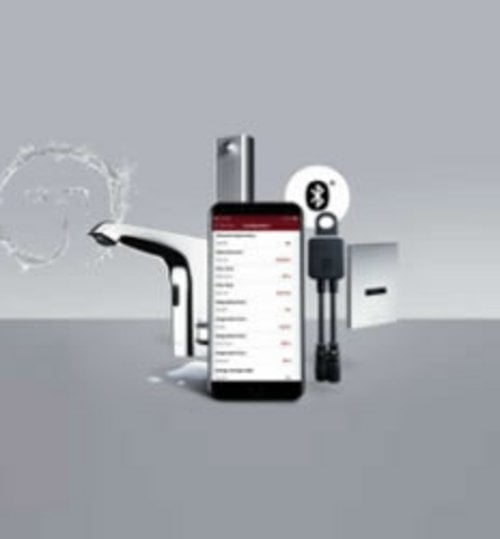
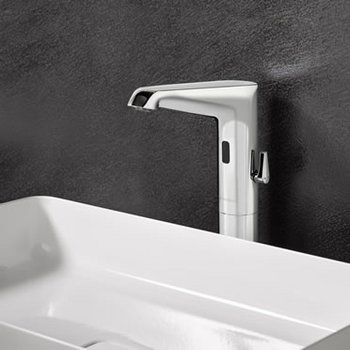
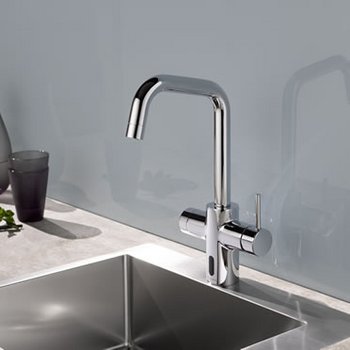
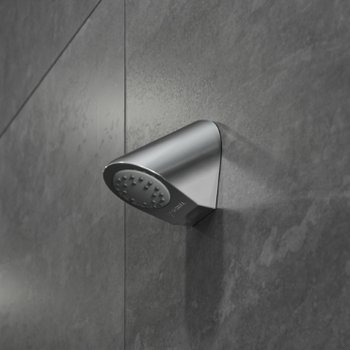
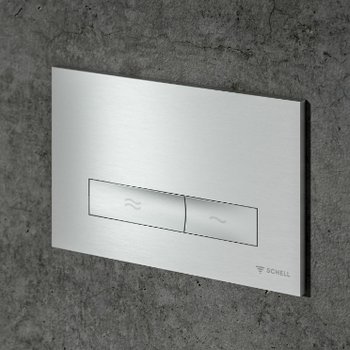
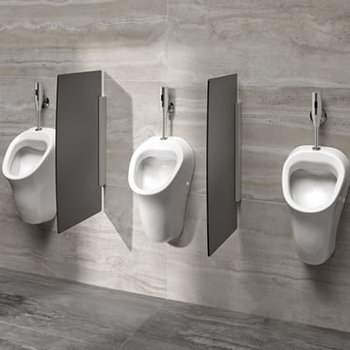
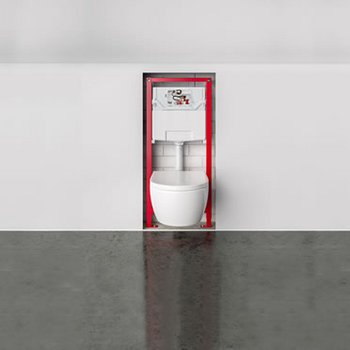
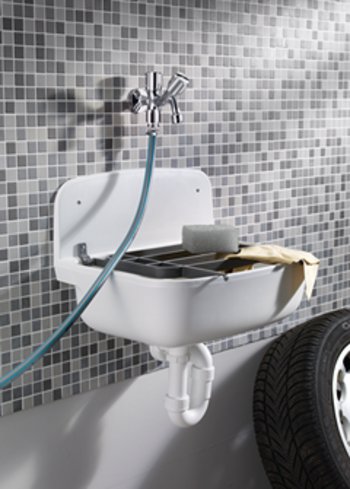
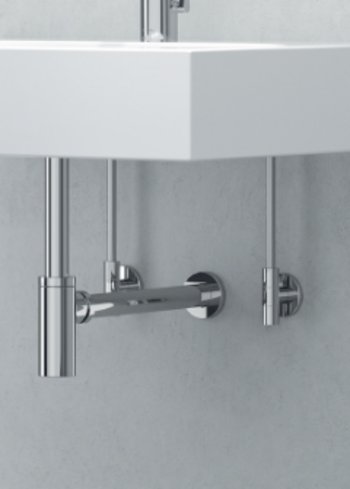
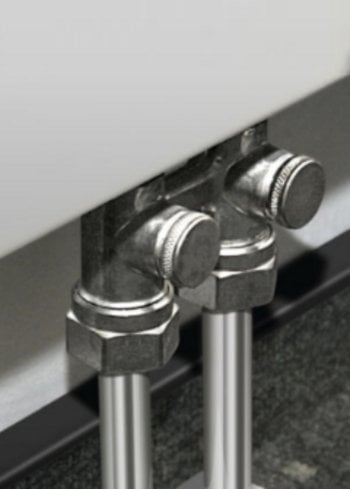
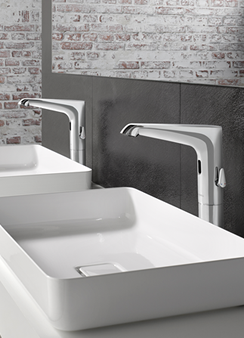
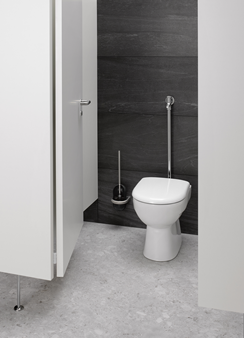
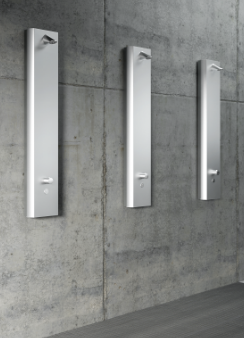
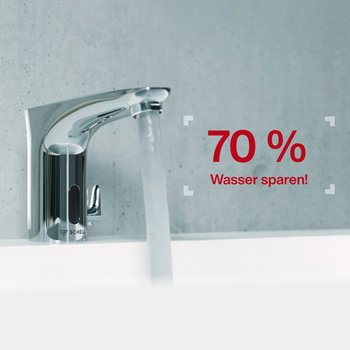
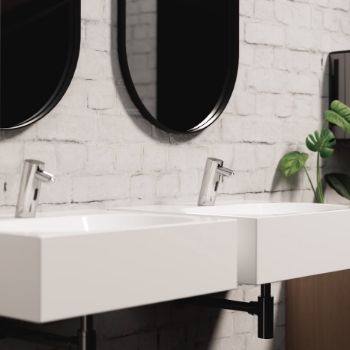

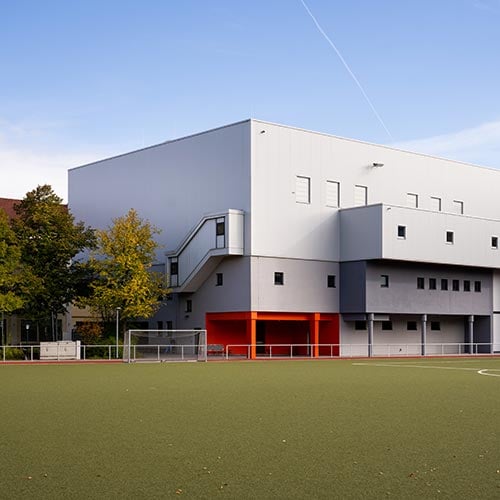
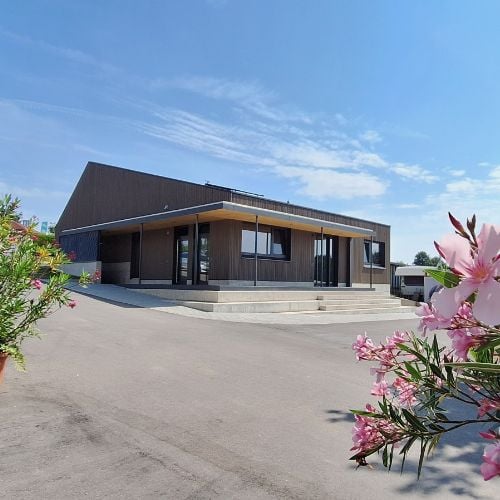
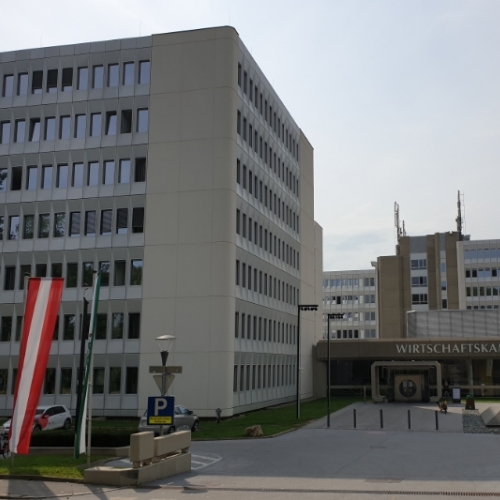
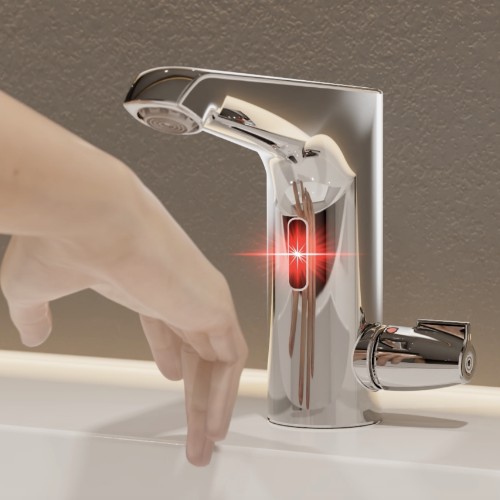
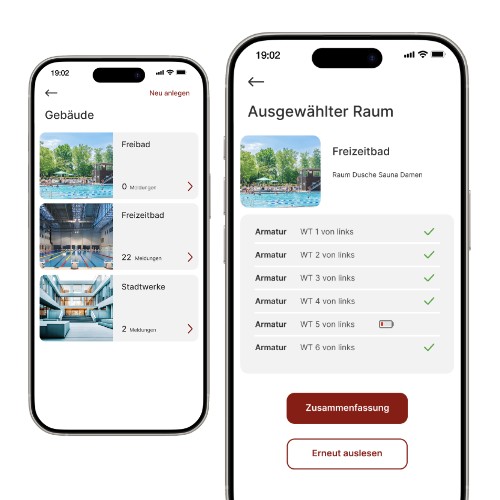
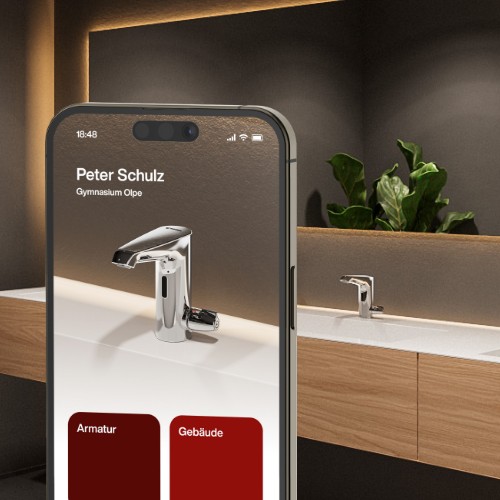
![[Translate to English:] [Translate to English:]](/fileadmin/user_upload/images/menu/menu_service_downloads_broschueren.jpg)
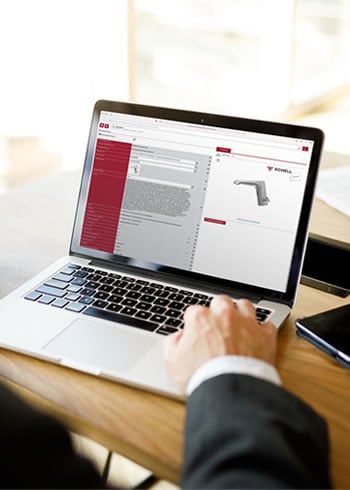
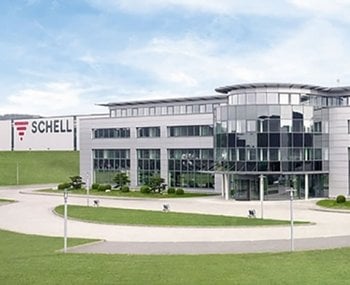


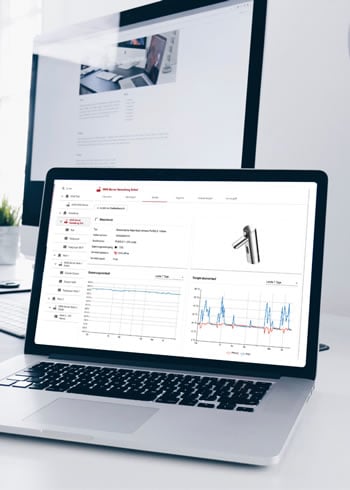

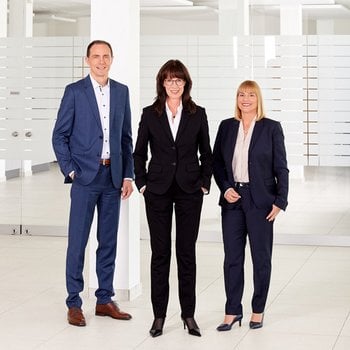
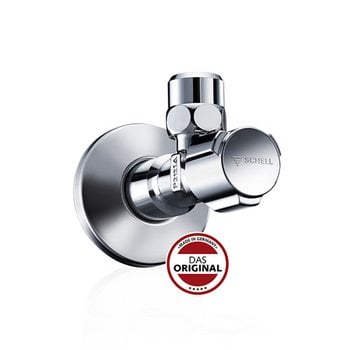
![[Translate to English:] [Translate to English:]](/fileadmin/_processed_/7/7/csm_menu_unternehmen_ueber-schell_awards_f6cec25b1d.jpg)
![[Translate to English:] [Translate to English:]](/fileadmin/_processed_/a/0/csm_menu_unternehmen_ueber-schell_wasser-sparen_41036d2dd9.jpg)


